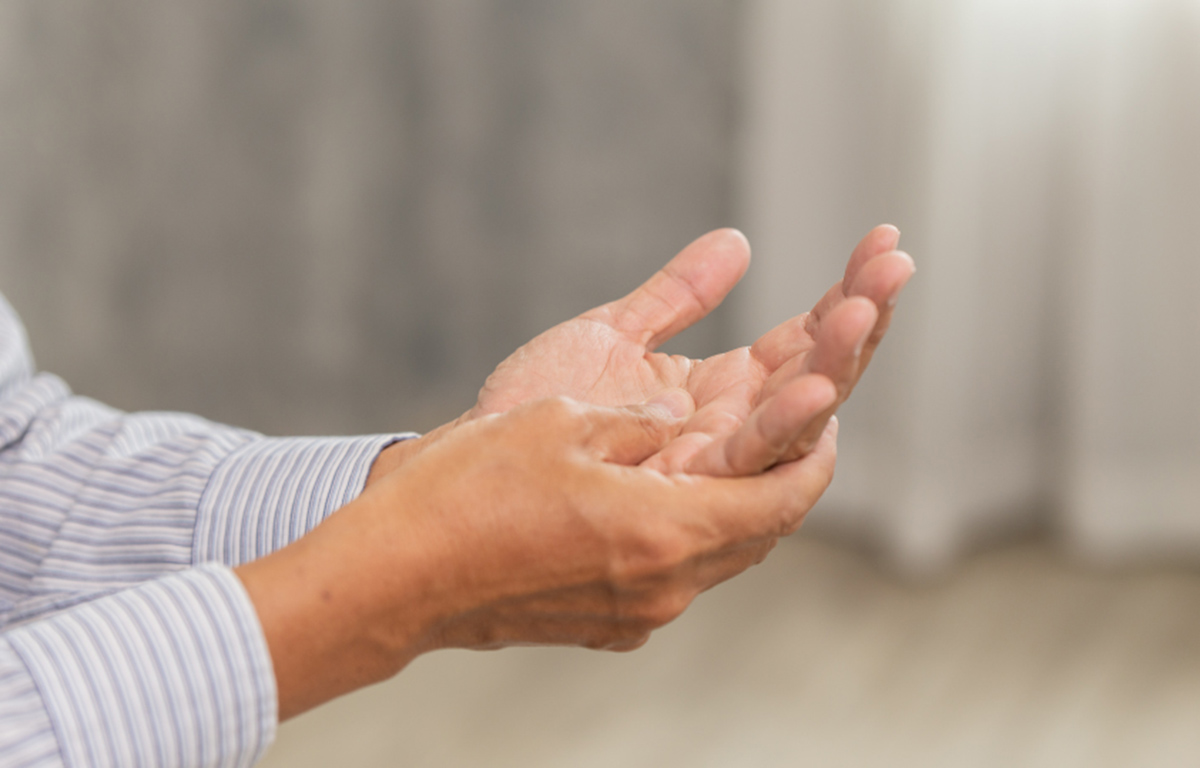Rheumatoid arthritis is a common subtype of arthritis, which is a collection of more than 100 diseases that are characterized by inflammation of joints, stiffness and swelling. Rheumatoid arthritis is an autoimmune disease, which means that your immune system attacks your own healthy tissue.

Diagnosis of rheumatoid arthritis
Most patients with rheumatoid arthritis, approximately 60 to 80 percent, have seropositive rheumatoid arthritis. If you are seropositive, it means that your blood has antibodies (small proteins that are an integral part of the immune system) called anti-cyclic citrullinated peptides (anti-CCPs) or anti-citrullinated protein antibodies (ACPAs). In the case of most people, these antibodies precede the manifestation of clinical symptoms by five to 10 years.
In the past, patients were diagnosed with seropositive rheumatoid arthritis based on the presence of another antibody known as rheumatoid factor (RF). However, since then, studies have shown that rheumatoid factor is present in a variety of other conditions and that anti-CCPs are more specific to patients with rheumatoid arthritis. Accordingly, most patients with anti-CCPs will also have a rheumatoid factor. Smokers are more likely to have seropositive rheumatoid arthritis compared to seronegative.
In order to diagnose you with seropositive or seronegative rheumatoid arthritis, your physician order a blood test that will look for the presence of anti-CCPs in your blood. However, the presence of anti-CCPs does not necessarily mean you definitely have rheumatoid arthritis. The doctor will diagnose you based on a mixture of symptoms and test results. However, if you have symptoms that are consistent with rheumatoid arthritis and you test positive for antibody, you almost certainly have rheumatoid arthritis.
In a minority of rheumatoid arthritis patients, there will be no anti-CCPs in the blood at all. In this case, the doctor may diagnose you with seronegative rheumatoid arthritis based on the symptoms. These symptoms include symmetrical involvement of joints (the same joint is affected on both sides of the body), polyarthritic symptoms (multiple joints in the body are affected) and inflammatory activity.
If you have symptoms that are suggestive of rheumatoid arthritis, but you are seronegative, you could have another type of arthritis called osteoarthritis. In fact, it is common for patients who are initially diagnosed with seronegative rheumatoid arthritis to eventually be diagnosed with a different type of arthritis including psoriatic arthritis or gout.
Symptoms of seropositive rheumatoid arthritis
The symptoms that are common across both types of rheumatoid arthritis include joint pain, joint stiffness, stiffness of the whole body in the morning for at least half an hour, inflammation in other regions of the body besides the joints, and fatigue.
The symptoms unique to patients with seropositive rheumatoid arthritis include:
- More severe pain compared to seronegative patients
- Rheumatoid nodules, which are swollen lumps under the skin
- Vasculitis or inflamed blood vessels
- Lung issues
- Comorbid conditions such as cardiovascular disease.
It is generally thought that seronegative patients have a milder set of symptoms compared to seropositive patients.
Treatments for rheumatoid arthritis
Depending on the type of rheumatoid arthritis you have, physicians might prescribe different treatment regimens. Likely, however, the treatment you receive will be similar whether you have seropositive or seronegative rheumatoid arthritis.
Currently, there is no cure for the disease. However, there are several treatments that can help treat the symptoms. These include:
- Non-steroidal anti-inflammatory medication (NSAIDs) such as ibuprofen or naproxen.
- Corticosteroids, such as prednisone, which suppress your immune system.
- Disease-modifying anti-rheumatic drug (DMARDs) such as methotrexate or lefunomide. Some studies have shown that seronegative patients don’t response well to a DMARD known as rituximab.
- Physical and occupational therapy. Physical therapy is a good way of of improving support to joints to improve your level of mobility and joint health. You can work with physiotherapists and occupational therapists to help improve mobility and range of motion as well as reduce pain by learning strategies and range-of-motion exercises that are specific to your condition. Furthermore, these specialists can help teach you new ways of performing daily activities that won’t put too much strain on your joints.
- Hot and cold packs to apply to joints for pain.
- Surgery on joints or tendons. Surgeries, including reconstructive surgery and joint replacement surgeries, may be necessary in some cases. While any surgery carries a risk, having a surgery can help improve quality of life and reduce pain. The decision to get surgery needs to be made in conjunction with your team of doctors.
Eventually, researchers hope to develop treatments that are specific to each type of rheumatoid arthritis and perhaps even develops ways to prevent the onset of these diseases.
- Padyukov, Leonid, et al. "A gene–environment interaction between smoking and shared epitope genes in HLA–DR provides a high risk of seropositive rheumatoid arthritis." Arthritis & Rheumatism: Official Journal of the American College of Rheumatology 50.10 (2004): 3085-3092.
- Kurkó, Júlia, et al. "Genetics of rheumatoid arthritis—a comprehensive review." Clinical reviews in allergy & immunology 45.2 (2013): 170-179.
- O'dell, James R., et al. "Treatment of early seropositive rheumatoid arthritis: doxycycline plus methotrexate versus methotrexate alone." Arthritis & Rheumatism: Official Journal of the American College of Rheumatology 54.2 (2006): 621-627.
- van der Heijde, Désirée MFM, et al. "Influence of prognostic features on the final outcome in rheumatoid arthritis: a review of the literature." Seminars in arthritis and rheumatism. Vol. 17. No. 4. WB Saunders, 1988.
- Photo courtesy of SteadyHealth.com


Your thoughts on this